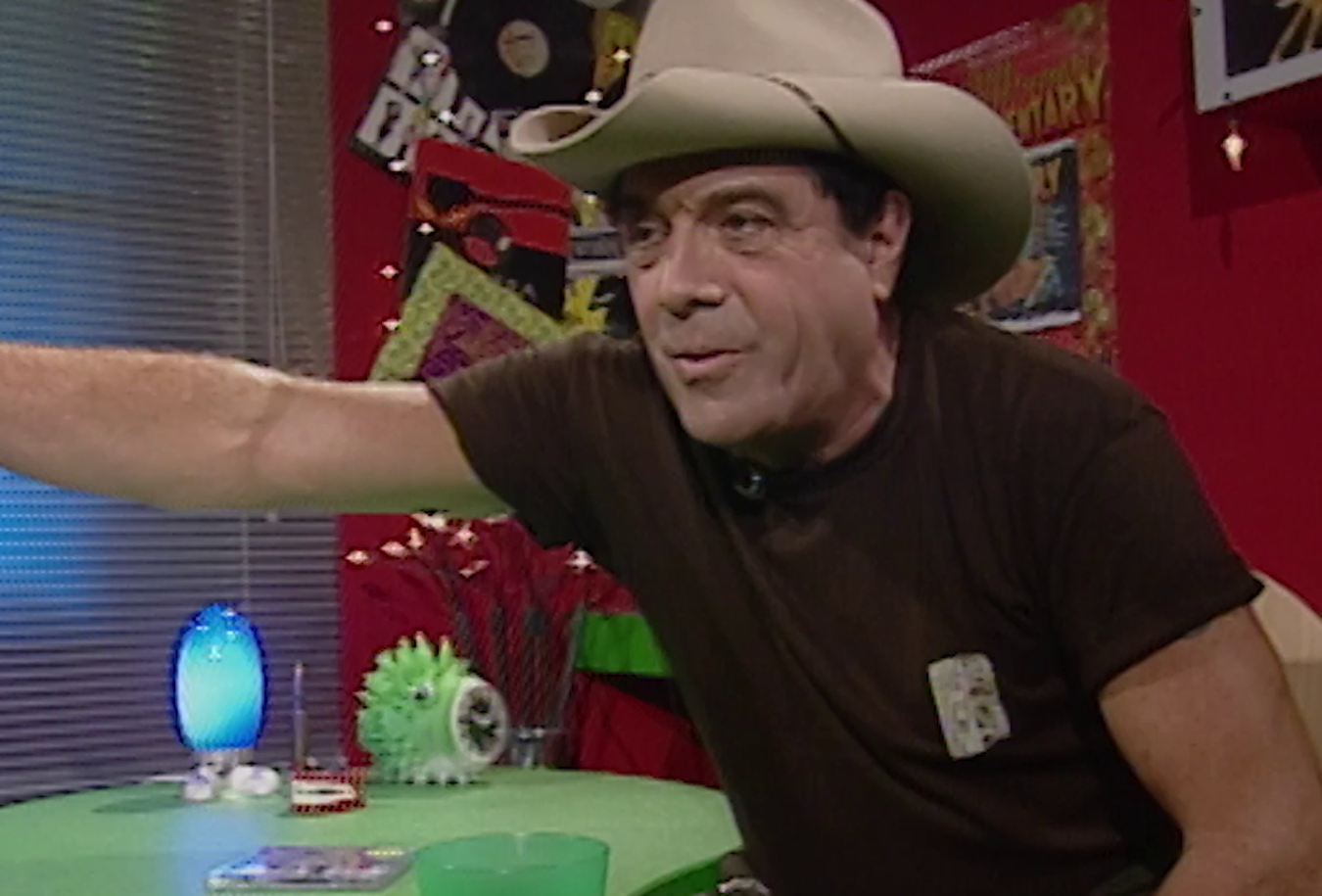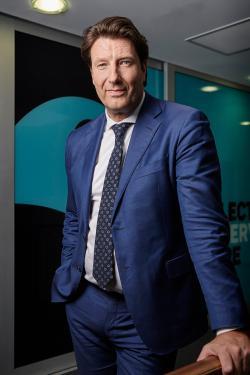

Annual report 2017-18
Chief Executive Officer's report 2018

In October 2017 I joined the National Film and Sound Archive, moving from the Netherlands with my family to make Australia our new home. I would like to extend my warm thanks to my predecessor, Michael Loebenstein, and my colleague Meg Labrum, who was the Acting Chief Executive Officer between Michael’s departure and my arrival. I have been very impressed with the leadership and commitment shown by the senior managers at the NFSA, as well as the dedication and knowledge of staff at all levels of the NFSA.
The past year has seen the implementation of a number of successful projects and the development of key policies regarding our future, the most significant of which is the NFSA’s strategic vision. This vision articulates a new focus for the NFSA, to ensure that we continue to grow as Australia’s national audiovisual archive into the future.
Our mission is to collect, preserve and share Australia’s national audiovisual heritage—past, present and future —in order for others to learn, experience and create with it. We must rise to the challenge of adapting to the digital age, shifting towards the concept of a digital ‘always on’ archive, and leading the way in using technology to build a collection that reflects the full diversity of Australia’s audiovisual output in all formats.
Our vision is underpinned by a firm belief that the future of audiovisual archives is digital. We envision the NFSA to be smart, connected and open in order to have real relevance in society.
At the same time, we are the stewards for a vast analogue collection, covering almost every format of audiovisual creation over the last hundred years. Our collection represents the diversity of Australia and we care deeply about the visibility, usability and sustainability of this extraordinary content. We see the NFSA as a truly ‘living’ archive of recorded sound and moving image.
Central to our vision is a strong commitment to three central themes that underpin everything we do: Knowledge and Innovation, Indigenous Connections and Collective Genius. This means that we speak with authority, and focus on new concepts and technologies to increase our impact, efficiency and output. We work with Aboriginal and Torres Strait Islander communities and partners to showcase their stories and works, to provide training opportunities in audiovisual conservation and to ensure the appropriate management of their audiovisual collection materials. Focusing on collective genius means fostering a community that is willing and able to generate new ideas, and encouraging our internal and external stakeholders to contribute to finding solutions to our challenges.
In order to remain relevant and to continue evolving alongside the creators and users of Australia’s audiovisual heritage, we have identified five priorities for action. Our first priority is to digitise the national audiovisual collection, with the aim of digitising over 40,000 audiovisual collection items every year by 2025. We have developed a digitisation strategy detailing the challenges, costs and targets for digitising the national collection.
Secondly, we will establish the NFSA as the National Centre for Excellence in Audiovisual Heritage. We want to take a collaborative approach and partner with a range of agencies to systematically digitise, store and provide access to Australia’s national audiovisual heritage collection.
We will invest in knowledge and innovation, and establish ourselves as a trusted digital repository for the collections sector.
Our third priority is to build our national profile, so that by 2025 we will be recognised as a leader in our field, revitalising our national presence with events and exhibitions that will enable us to engage with audiences online, onsite at the NFSA headquarters and offsite around the country. Our upcoming exhibition ‘HEATH LEDGER: a life in pictures’, curated by the Western Australian Museum, heralds the return of blockbusters to our Canberra premises.
Our fourth priority focuses on multimedia and new media. Our collection policy, skills and capacity need to be broadened to collect, preserve and share multimedia and new media content including online content, games and virtual reality.
The fifth and final priority we have identified centres on redefining our physical space by having a new facility in Canberra by 2025 that is fit for purpose, in addition to ensuring that we have a visible presence in every capital city.
I have presented our strategic vision at public events in Canberra, Melbourne and Sydney. The high level of engagement shown by audiences at these events has highlighted that the future direction of the NFSA is of critical importance to many people from many different backgrounds. These are indeed exciting and significant times for the NFSA.
In addition to considering and defining our future path, there have been a number of milestones, projects and events throughout the past 12 months which are detailed within this Annual Report.
Our collaboration with the National Portrait Gallery resulted in the spectacular ‘Starstruck: Australian Movie Portraits’ exhibition which was launched in November 2017. Over 14,000 visitors viewed the exhibition during the four months it was open in Canberra, and it will now be taken to various locations around the country for more Australians to experience and enjoy.
NFSA Restores, our film restoration program, has produced a number of exceptional digital restorations this year including My Brilliant Career (1979), Lousy Little Sixpence (1983), Mabo: Life of an Island Man (1997) and three Snowy Baker titles from the 1920s. Many painstaking hours by our skilled technicians and curators were involved in these highly specialised restorations.
Our Enterprise Agreement 2017–20 was implemented in September 2017 after in-depth staff consultation. Work on our Reconciliation Action Plan is progressing well, and it will soon be submitted to Reconciliation Australia for formal feedback and endorsement.
Our third annual Digital Directions symposium was held in October 2017 in Canberra. This highly successful and sold-out event focused on users, bringing together over 200 delegates from Australia and New Zealand to look at the challenges to providing access to quality digital heritage collections.
In January 2018, we held our first internal all–staff conference in Canberra for many years. It was a unique opportunity to come together and consider the NFSA’s future. We held a very productive ideas ‘hackathon’, which resulted in many innovative proposals, a number of which have already been implemented. It also provided the chance to do some dancing in our breaks, and we submitted the footage to the Museum Dance Off competition for galleries, libraries, archives and museums around the world. In addition to being a memorable team-building exercise, this led to us being crowned Australian champions, and receiving fourth place in the global finals of the competition.
My thanks go to our Chair, Gabrielle Trainor, and the dedicated members of the NFSA Board for their continuing assistance and guidance. I also wish to acknowledge the staff of the Department of Communications and the Arts, and the Minister for Communications and the Arts, Senator the Hon Mitch Fifield, for their help and input throughout the year. I would like to thank our ambassadors, our volunteers and the Friends of the NFSA for their enthusiasm and commitment. To my colleagues at the NFSA, thank you for your diligence and drive. It is due to your support that I look to our future with great optimism.

Jan Müller
Chief Executive Officer
The National Film and Sound Archive of Australia acknowledges Australia’s Aboriginal and Torres Strait Islander peoples as the Traditional Custodians of the land on which we work and live and gives respect to their Elders both past and present.